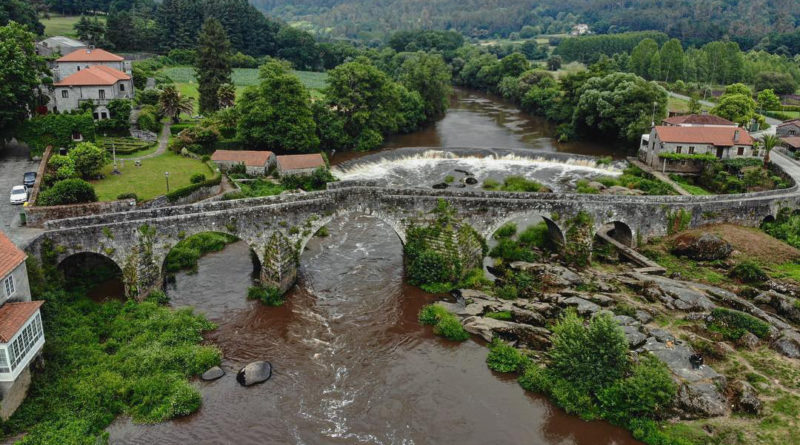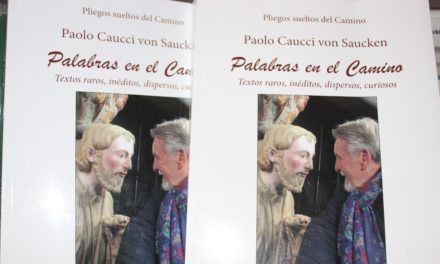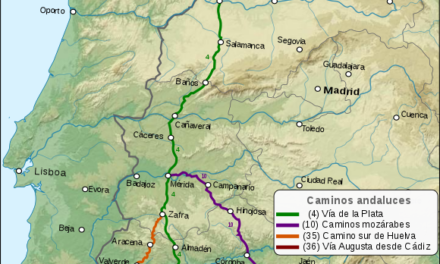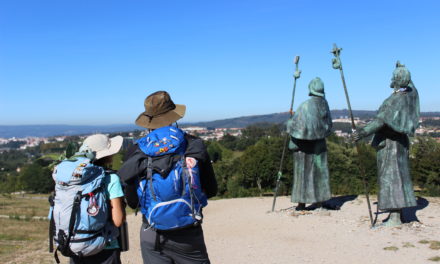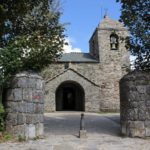Pilgrims who decide to continue on their way as far as Fisterra-Muxía, will find very early on a place of extraordinary architectural and natural beauty: Ponte Maceira, only 8 kilometers from Santiago. The place takes its name from the bridge, which was one of the main bridges of this land for centuries, used by travellers and pilgrims to cross the Tambre river. The bridge, the houses and the natural setting all blend together to create a small, beautiful place of almost magical charm.
The bridge was built in the XIII-XIV centuries at the request of the Archbishop of Santiago. The current edifice still retains much of the original medieval features, with its five great gothic arches. Some other elements are the result of renovation in the eighteenth century. The size and the importance of the works to build and preserve the bridge were due to its strategic/ geographic importance, since it spanned the Tambre, the river which separated the city of Santiago from the North of Galicia.
There are many Jacobean legends which refer to this bridge, including one of the most famous episodes in the adventures undergone by the disciples of Santiago when they were looking for a place to bury the Apostle. The legend tells how the disciples were pursued in these lands by Roman soldiers and how, thanks to divine protection, once the disciples had crossed the old bridge, their pursuers dropped to the ground and rolled into the river, which prevented others from continuing the pursuit. Added to this legend there is also a well- known historical episode that occurred in this place: the battle in the thirteenth century when the troops of Diego Xelmírez , Archbishop of Compostela, confronted the men of Pedro Froilaz of Traba.
Among the buildings in the village there are several houses of traditional architecture with coats of arms and other heraldic devices carved on their walls. Also noteworthy is the Pazo de Baladrón that, although quite recent ( it was built between 1945 and 1955) conforms to the style of traditional monumental architecture. But just near the bridge is the real treasure of the village: its ancient group of hay lofts, granaries and mills.
Religious architecture also has its place in Ponte Maceira. In the centre of the village stands a small chapel dedicated to San Blas, an eighteenth century building , and there is also the Romanesque church of Santa María de Portor, whose original twelfth-century tower survives to this day.
Photo: We have taken this image of the Commons Wikipedia project, its author is Jule_Berlin.

